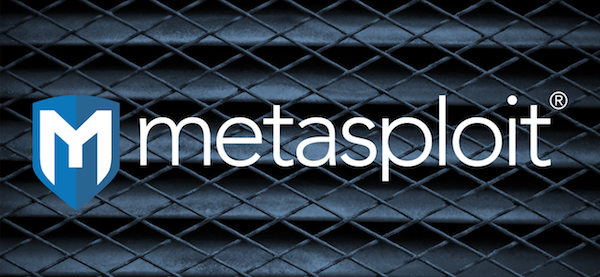
Cyble Research & Intelligence Labs (CRIL) analyzed 23 vulnerabilities in its weekly vulnerability report for June 19-25, including critical flaws in products from the likes of Microsoft, Adobe, MOVEit and more.
The report focuses on 10 vulnerabilities in particular: Three in Microsoft products – including a 7-year-old Office flaw facing new exploits – and one each in products from Adobe, MOVEit, VMware, Fortra, Phoenix Technologies, SolarWinds, and Themify.
Thousands of new security vulnerabilities are discovered each year, yet only a small percentage of those are actively exploited by threat actors. To help
security teams focus on the most important vulnerabilities and threats, The Cyber Express each week partners with Cyble’s highly skilled dark web and threat intelligence researchers to highlight security vulnerabilities that warrant particularly close attention.
The Week’s Top Vulnerabilities
These are the 10 high-severity and critical vulnerabilities Cyble researchers focused on this week.
CVE-2024-5276
Impact Analysis: This critical SQL Injection vulnerability in
Fortra FileCatalyst Workflow, a web-based file transfer platform accelerating large file exchanges, allows an attacker to modify application data, with likely impacts including the creation of administrative users and deletion or modification of data in the application database. It is worth noting that data exfiltration via SQL injection is not possible by leveraging the vulnerability; further successful unauthenticated exploitation requires a Workflow system with anonymous access enabled; otherwise, an authenticated user is required.
Internet Exposure? No
Patch Available? Yes
CVE-2024-5806
Impact Analysis: This critical improper authentication vulnerability impacts
Progress MOVEit Transfer (SFTP module), which can lead to authentication bypass in the secure managed file transfer application. With successful exploitation, an attacker could access sensitive data stored on the MOVEit Transfer server; upload, download, delete, or modify files; and intercept or tamper with file transfers. Within a day of the vendor disclosing the vulnerability, security researchers started to observe exploitation attempts targeting it due to its vast exposure and impact, Cyble researchers noted.
Patch Available? Yes
CVE-2024-0762
Impact Analysis: This high-severity buffer overflow vulnerability impacts unsafe UEFI variable handling in
Phoenix SecureCore, an advanced UEFI firmware solution developed for client PCs, notebooks, and IoT/embedded devices. The vulnerability could be exploited to execute code on vulnerable devices. Furthermore, given the enormous number of Intel CPUs that use this firmware, the vulnerability might affect hundreds of models from vendors, including Lenovo, Dell, Acer, and HP, Cyble researchers noted.
Internet Exposure? No
Patch Available? Yes
CVE-2024-34102
Impact Analysis: This critical improper restriction of XML external entity reference ('XXE') vulnerability impacts Adobe Commerce, a leading digital commerce solution for merchants and brands. An attacker could exploit this vulnerability by sending a crafted XML
document that references external entities, leading to arbitrary code execution.
Patch Available? Yes
CVE-2024-28995
Impact Analysis: The high severity directory transversal vulnerability impacts SolarWinds Serv-U, a secure managed file transfer (MFT) solution. Successful exploitation of the vulnerability could allow threat actors access to read sensitive files on the host machine. Recently researchers have observed active exploitation of vulnerability leveraging publicly available proof-of-concept (PoC) exploits.
Patch Available? Yes
CVE-2017-11882
Impact Analysis: The high-severity vulnerability impacts Microsoft Office 2007 Service Pack 3, Microsoft Office 2010 Service Pack 2, Microsoft Office 2013 Service Pack 1, and Microsoft Office 2016. It could allow an attacker to run arbitrary code in the context of the current user by failing to handle objects in memory properly. Recently, researchers uncovered that this 7-year-old vulnerability was leveraged in cyberespionage campaigns orchestrated by alleged state-sponsored groups.
Internet Exposure? No
Patch Available? Yes
CVE-2024-6027
Impact Analysis: The high-severity vulnerability impacts the Themify WooCommerce Product Filter plugin for WordPress, which could lead to time-based SQL Injection via the ‘conditions’ parameter. Exploiting the vulnerability makes it possible for unauthenticated attackers to append additional SQL queries into already existing queries that can be used to extract sensitive information from the database.
Internet Exposure? Yes
Patch Available? Yes – upgrade to version 1.5.0
CVE-2024-37079
Impact Analysis: Cyble also addressed this vulnerability in
last week’s vulnerability report. The critical severity heap-overflow vulnerability impacts the VMware vCenter Server, a central management platform for VMware vSphere that enables the management of virtual machines and ESXi hosts. Given the global usage of the impacted product and the history of leveraging the flaws impacting vCenter, Cyble said there are possibilities that threat actors (TAs) could also leverage this critical vulnerability.
Internet Exposure? Yes
Patch Available? Yes
CVE-2024-30103
Impact Analysis: This high-severity remote code execution (RCE) vulnerability impacts Microsoft Outlook. Since the RCE flaw can be exploited simply by opening and previewing an email that contains a malicious payload in the body, requiring no further interaction from the user, there are high possibilities for TAs to weaponize the vulnerability in targeting government and private entities.
Internet Exposure? No
Patch Available? Yes
CVE-2024-30078
Impact Analysis: This high severity remote code execution (RCE) vulnerability impacts Windows Wi-Fi Driver. With the wide usage of Windows devices around the world and the ability to exploit without the need for any user interaction, TAs can leverage the flaw to gain initial access to the devices and later install
malware and exfiltrate user data.
Internet Exposure? No
Patch Available? Yes
Dark Web Exploits
Cyble’s scans of customer environments found nearly a million exposed assets for just 7 vulnerabilities this week. Nearly 200,000 assets were exposed to the the VMware vCenter Server vulnerability, while a PHP vulnerability (CVE-2024-4577) reported
two weeks ago continues to dominate, affecting nearly 600,000 exposed assets.
Cyble researchers also observed five instances of alleged zero-day vulnerabilities being offered on sale on underground forums, plus a number of exploits/proof of concepts/custom scripts observed over underground forums. The full report available for clients covers all these vulnerabilities, along with details and discussion around exploits found on the dark web, industrial control system (ICS) vulnerability intelligence, and
cybersecurity defenses.








 Bank of America and IRS.gov certificates as displayed on Chrome Certificate Viewer[/caption]
Bank of America and IRS.gov certificates as displayed on Chrome Certificate Viewer[/caption]
 Sample of how Chrome will display warning for websites having a certificate from Entrust or AffirmTrust (Source: Google)[/caption]
Sample of how Chrome will display warning for websites having a certificate from Entrust or AffirmTrust (Source: Google)[/caption]





 Source: snailload.com[/caption]
The attack masquerades as a download of a file or any website component (like a style sheet, a font, an image or an advertisement). The attacking server sends out the file at a snail's pace, to monitor the connection latency over an extended period of time. The researchers decided to name the technique 'SnailLoad' as "apart from being slow, SnailLoad, just like a snail, leaves traces and is a little bit creepy."
The attack requires no JavaScript or code execution on the victim's system. It simply involves the victim loading content from an attacker-controlled server that sends
Source: snailload.com[/caption]
The attack masquerades as a download of a file or any website component (like a style sheet, a font, an image or an advertisement). The attacking server sends out the file at a snail's pace, to monitor the connection latency over an extended period of time. The researchers decided to name the technique 'SnailLoad' as "apart from being slow, SnailLoad, just like a snail, leaves traces and is a little bit creepy."
The attack requires no JavaScript or code execution on the victim's system. It simply involves the victim loading content from an attacker-controlled server that sends 


 Source: Wikipedia[/caption]
[caption id="attachment_79525" align="alignnone" width="1476"]
Source: Wikipedia[/caption]
[caption id="attachment_79525" align="alignnone" width="1476"] Emulated system (Source: claroty.com)[/caption]
To study the Emerson Rosemount 370XA gas chromatograph, commonly used in
Emulated system (Source: claroty.com)[/caption]
To study the Emerson Rosemount 370XA gas chromatograph, commonly used in 
-Tuta-alamy.jpg)

_Bill_Crump_alamy.jpg)
-ronstik-Alamy.jpg)











_Mopic_Alamy.jpg)

_NicoElNino_Alamy.jpg)
